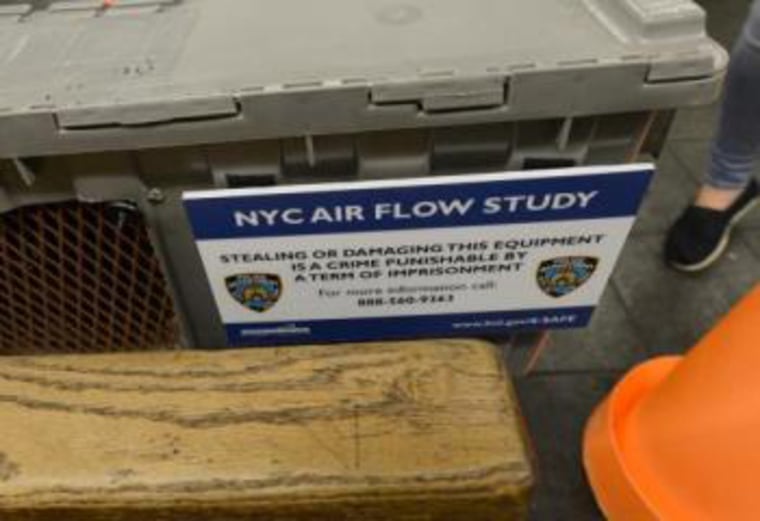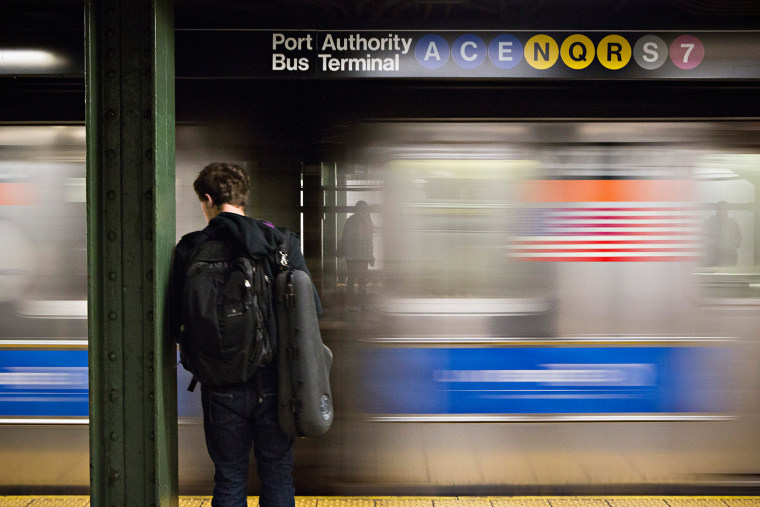The summer heat has some pretty fruity odors wafting out of the New York City subway, but today, there are a few new gases in town.
Researchers and New York City law enforcement officials are collaborating on a massive air flow test in the city's subways to help police and health workers respond speedily in the case of an accidental chemical spill or gas-based terrorist attack.
Paul Kalb, division research head at Brookhaven National Labs, who is involved with the research, told NBC News that the study will examine the "worst-case scenario" if noxious material was to travel by tunnel, "if it's a gas or a radiological material from a dirty bomb," he said.
The information could be used to plot escape routes and safe zones. "If a truck carrying a toxic chemical overturned, the information will show emergency responders where the safe zones are," Kalb said.

The project, titled Subway-Surface Air Flow Exchange Study (or S-Safe for short), is a collaborative effort of the Los Alamos National Laboratory, Brookhaven National Laboratory and Argonne National Laboratory.
According to the S-Safe website, this summer's $3.4 million study was commissioned by the New York Police Department and funded by a grant from the Department of Homeland Security. While air flow tests have been conducted in Washington D.C. and Boston's underground subway systems, there has yet to be a study of this scale, the group leaders say.
On Tuesday, and on two other test dates this month, the group will release tiny amounts of seven different kinds of tracer gases, all harmless members of a family of chemicals called perfluorocarbons.
An army of student interns will help sample the air in hundreds of locations under and above ground in five boroughs of the city. The goal is to track where and how quickly the gases travel and what paths they follow.
With subways running their usual schedules (and delays), New York commuters may not notice anything amiss, except for discretely placed (although prominently marked) gray boxes located in some subway stations. According to NBC New York, the Columbus Circle subway station was included in Tuesday's tests.
Brookhaven researchers were involved in a similar but smaller study in 2006, when they released tracer gases over two days near Madison Square Garden, at office buildings and a few subway stations.
After months of analysis, the results won't be made public. Rather, the researchers will make their recommendations to the government. "We don't want to be giving recipes to would-be terrorists to attack the city," Brookhaven's Kalb said.
Nidhi Subbaraman writes about technology and science. Follow her on Facebook, Twitter and Google+.
